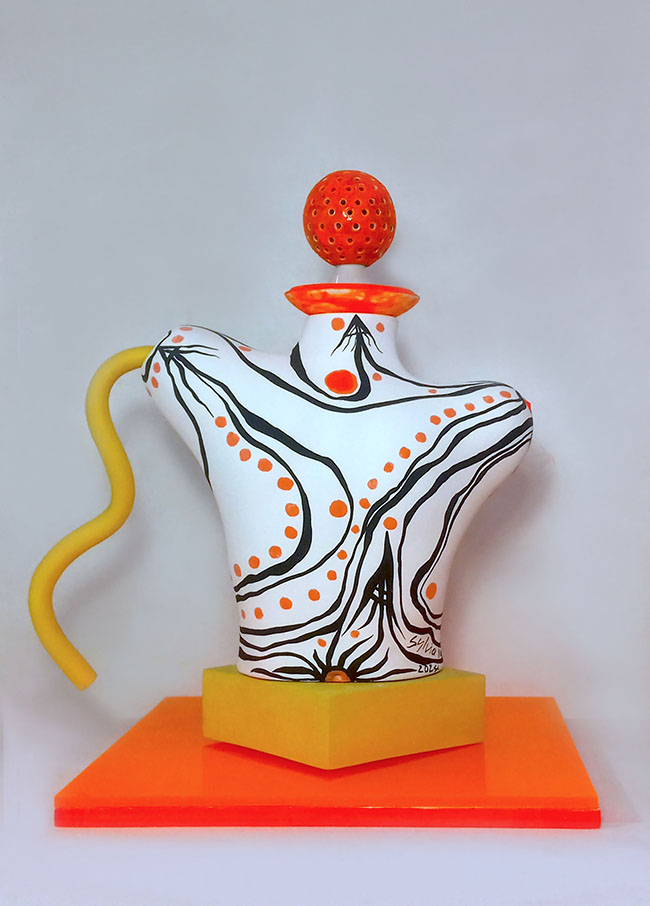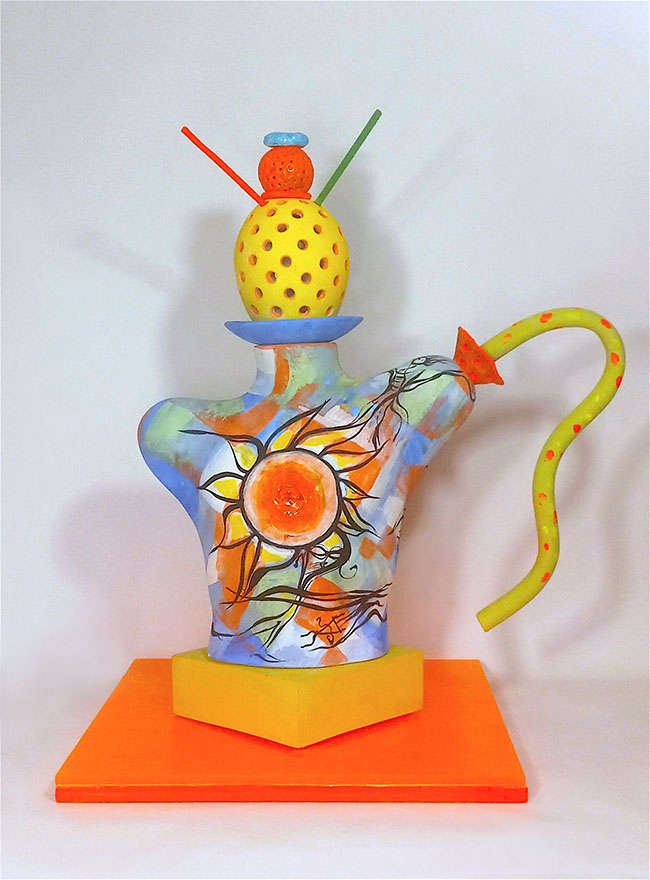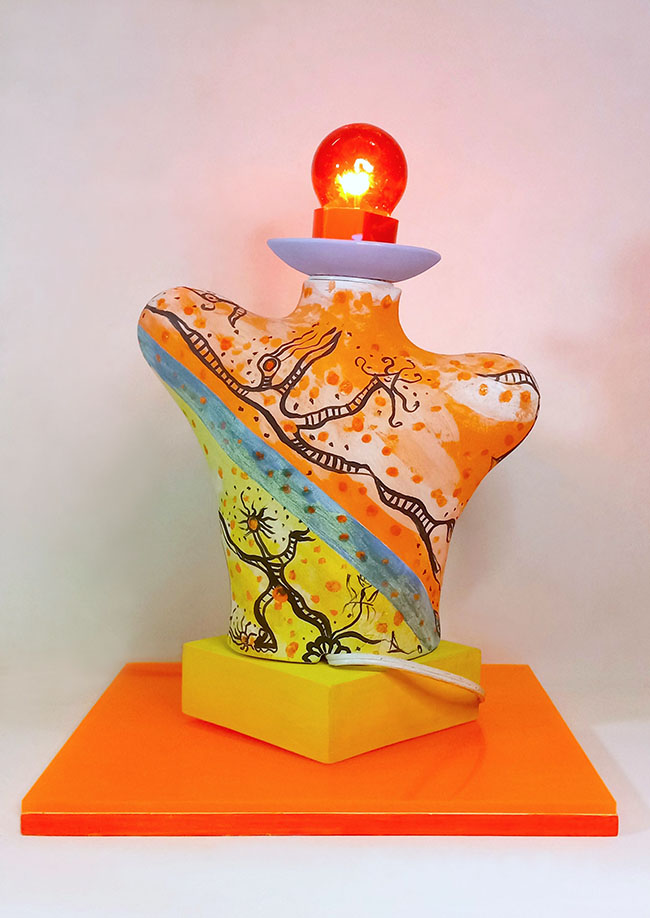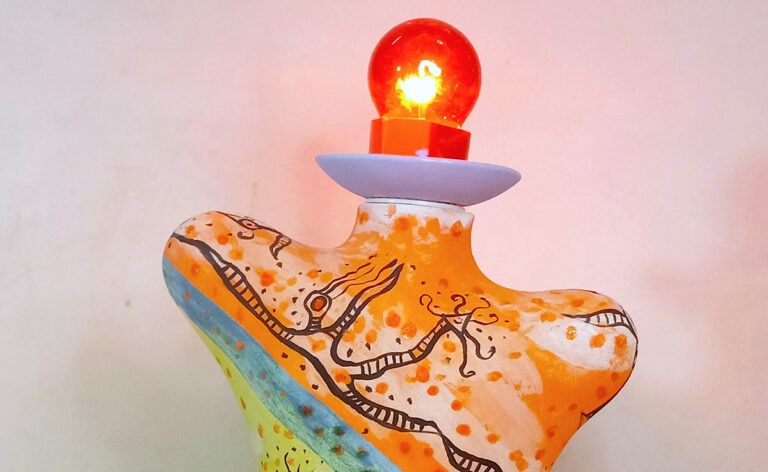Sylvia Nagy, a renowned ceramic artist, was born and raised in Budapest, Hungary. Her passion for art ignited at a young age, leading her to attend a special art high school in Budapest, where she studied Decorative Painting for four years. This early immersion in art provided a solid foundation for her future career.

Following her high school education, Nagy pursued further studies in Silicet Industrial Technology and Art at Moholy-Nagy University, specializing in Ceramic Design, Glass, and Ceramic Sculpture. Her talent and dedication earned her a place at the prestigious Parsons School of Design. There, she was invited to teach industrial ceramic design and developed a class on Mold Model Making in Plaster. Her journey through these esteemed institutions has solidified her reputation as a distinguished ceramic artist, with a unique blend of technical skill and creative vision.
Sylvia Nagy’s journey into the world of ceramics is a story of passion, resilience, and creative exploration. Her work is not just about shaping clay but about sculpting emotions, ideas, and stories. Each piece she creates carries a fragment of her soul, a reflection of her diverse experiences and profound understanding of the human condition.
Sylvia’s early experiences with ceramics were filled with trials and errors, a testament to her commitment to mastering her craft. Her first piece, a torso, met an unfortunate fate in the kiln, exploding due to rushed firing. However, Sylvia’s resourcefulness turned this setback into an opportunity. She reconstructed the piece using bisque ware fragments, creating a plaster model that allowed her to slip cast multiple versions. Each version was painted differently, giving distinct personalities and meanings to the same form. This approach highlighted her ability to infuse life and character into her creations.

One of Sylvia’s works is the “Dancing Torso,” a ceramic sculpture she crafted overnight. Starting at 11 PM and finishing at 11 AM, Sylvia worked tirelessly without sleep, driven by her creative impulse. This piece, unplanned and spontaneous, emerged from her subconscious mind, embodying both grace and strength. The sculpture’s orientation—initially intended to be upside down—turned out to be perfect in its final form, showcasing Sylvia’s intuitive artistic process.
The “Dancing Torso” is more than just a sculpture; it’s a narrative. The front side, representing the present and future, features wings symbolizing creative imagination. The back side, representing the past, reminds us to leave behind the bad times and focus on future creativity. This duality in her work reflects Sylvia’s belief in the power of art to transcend time and convey profound messages.

Sylvia’s “Torso with Light Bulb” series delves deep into the human psyche. The light bulb symbolizes the awakening of consciousness, a spark of understanding that illuminates our lives. Each torso in this series captures the interplay between physical and intellectual pursuits, reflecting how different individuals express their life experiences. For Sylvia, the body and mind are inextricably linked, their symbiotic relationship beautifully expressed through her art.
Her “Sunset Meditation” torso continues this exploration of the human condition. This series investigates life’s journey, identity, and spirituality. Sylvia believes that the human body is a dynamic system that connects us to our environment, a communication tool with its own unique language. Through her sculptures, she seeks to reveal the hidden parts of our identities, inviting viewers to embark on an immersive experience inside the labyrinth of consciousness.
Sylvia’s artistic direction is heavily influenced by her love for dance, fashion, and the natural rhythms of life. Her sculptures often merge physical forms with abstract ideas, creating a visual language that resonates on multiple levels. She uses color as a powerful tool, understanding its ability to convey emotions and moods. In her work, colors are not just aesthetic choices but integral elements that add depth and meaning.
One of her techniques involves merging the two sides of a sculpture’s head with a wavelength pattern, symbolizing the flow of music and its impact on the body. This fusion of auditory and visual elements showcases Sylvia’s interdisciplinary approach, blending art, music, and science. Her work is a testament to the idea that art is not confined to one form but is a holistic expression of life’s vibrancy.
Sylvia’s sculptures are deeply personal, reflecting her life and surroundings. She believes in the concept of biorhythms and frequencies, seeing them as fundamental aspects of our connection to the universe. Her work often explores the idea of vibration, whether through sound waves or electromagnetic fields, and how these frequencies influence our perception of reality.
Animals, for Sylvia, embody a spiritual and instinctual connection to these higher frequencies. She draws parallels between the intuitive nature of animals and the expressive power of art. Through her sculptures, she aims to bridge the gap between these realms, creating pieces that resonate with both human and animalistic energies.
Sylvia’s latest work, the “Dancing Torsos,” continues her exploration of the human condition through movement and dance. Each torso in this series embodies a unique character, reflecting different aspects of identity and experience. Sylvia’s excitement for this project is palpable, and she looks forward to assembling a group of these dynamic sculptures.
Her work is a continuous journey of discovery, each piece a step towards understanding the complexities of life and identity. Sylvia’s sculptures invite viewers to engage with their own consciousness, to explore the hidden parts of their identities, and to appreciate the intricate dance between body, mind, and soul.
Sylvia Nagy’s art is a celebration of life in all its forms. Her ceramics are not just objects but stories, each telling a unique tale of resilience, creativity, and human connection. As she continues to create, teach, and inspire, Sylvia’s work remains a testament to the transformative power of art.

